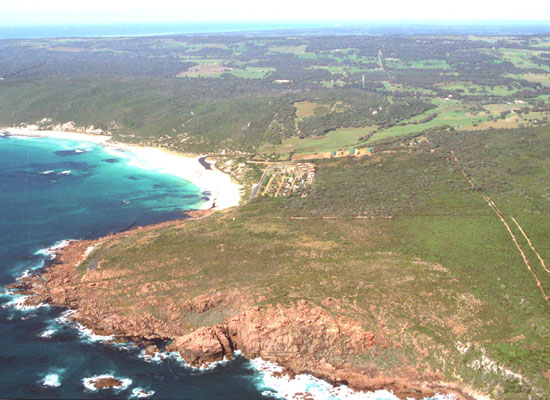Save Smiths Beach |
|
The image (above) is a roll-over image and a link to more detailed images The site "is extensively covered with a mosaic of dense coastal vegetation comprised of 6 community types. These vary from a low woodlands of Banksia-Peppermint, Low Open Forest of Peppermint, Jarrah & Marri, to closed heath communities of Rottnest Tea Tree, Chenyle Honey Myrtle, Coastal Sheoak and Acacia Species. All of the vegetation communities present on the location are relatively undisturbed and are contiguous with the surrounding vegetation of the Leeuwin-Naturaliste National Park." "The rocky headland in the west has a high scenic landform quality; * The low heath vegetation on the western headland and the Banksia vegetation are considered to have high scenic quality in terms of vegetation." "With regard to the proposed measures of retaining vegetation on private lots, past experience has shown that it is very difficult for Council to achieve long term retention of screening and other vegetation in coastal developments with attractive views." "Overall, it is quite clear that the development of Loc 413 as proposed will result in a substantial and unavoidable loss in vegetative cover on the location and a long term requirement for intensive management of the coastal foreshore and fringing periphery of the Leeuwin-Naturaliste National Park. ...Council should consider carefully the proposed density of development on this location in balance with these other long term impacts, which potentially could affect the amenity value of the currently popular Smiths Beach and Canal Rocks locations generally." (Shire Planning Staff comments, 2001) |
